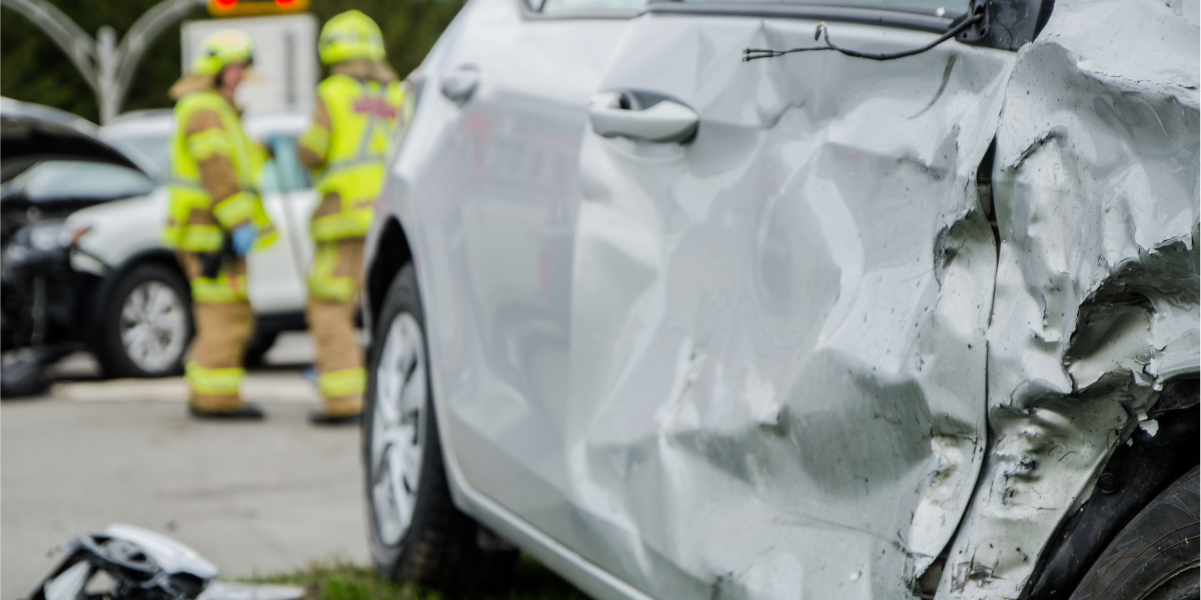Think about how many times you have been lawfully driving along a highway in moderate traffic when, to your great surprise, a car whizzes by traveling 15, 20, even 25 mph faster than you. You watch in amazement as the speeder races along in front of you, weaving in-and-out of the two or three lanes of highway, passing car after car until finally, he’s out of sight. You wonder where the State or local police are, then realize that only by chance could the authorities have been there to catch this dangerous driver. You think to yourself, “what could I have done about it?” One option would have been to take down his license plate number, or perhaps the make, model and color of his car, then call 911. But then you realize that you were so stunned that by the time that thought occurred to you, the driver was almost a mile away – gone. The likelihood of the police successfully responding to your call is virtually zero.
You hypothetically witnessed a classic incident of aggressive driving. Fortunately, you were not a victim. However, events like this happen every minute of every day on U.S. highways and roadways. Aggressive driving is a topic on the minds of every state and local police force as well as every public and private traffic safety organization in the country
What Is Aggressive Driving?
Aggressive driving comes in many forms. Many of us instantly think of road rage as the most frightening and dangerous kind when, in fact, there is an important distinction between road rage and aggressive driving. Most states consider road rage to be a criminal offense, wherein the offender uses a vehicle as a weapon or physically assaults another operator of a motor vehicle.
Aggressive driving, on the other hand, is much broader and more inclusive than road rage. It is not per se criminal. It occurs whenever someone commits a traffic offense with little regard for the rights of others and puts other people or property in danger. The National Highway Traffic Safety Administration (NTHSA) defines aggressive driving as any instance where “an individual commits one or more moving traffic offenses so as to endanger other persons or property.” The State of Georgia defines aggressive driving in its traffic laws as “the intent to annoy, harass, molest, intimidate, injure or obstruct another person,” while doing one any of the following:
- overtaking and passing another vehicle;
- violating traffic lane markings;
- following too closely;
- violating signal, lane change, slowing or stopping laws;
- impeding traffic flows;
- reckless driving.
In its most common forms, aggressive driving includes speeding, weaving between lanes, tailgating, flashing lights unnecessarily, honking unnecessarily, passing dangerously, driving on the shoulder, running red lights and stop signs, failing to yield the right-of-way, or gesturing or yelling.
What Causes Aggressive Driving?
Various entities in the traffic safety community such as the NTHSA and AAA have studied the reasons behind aggressive driving. The bottom line is that most researchers conclude that aggressive driving is a behavioral issue that is oft-times more incidental than habitual. Our personal lives or life in general can be stressful. When people get into an automobile, they are not always having the best of days. Sometimes they are tired, stressed, annoyed, or disconcerted by something going on in their lives or in the world. Moody behavior, good or bad, can translate into good or bad driving behavior. While you may be having a good day, the driver in front of, behind, or next to you may not, and this situation can end up unpleasantly or even tragically. The majority of motorists consider aggressive driving to be one of the most significant threats to their safety. It is therefore important that whenever you get behind the wheel of an automobile, you be calm and courteous and respect all traffic laws. Doing so significantly enhances your chances of avoiding an accident or being confronted by a driver who may not be so conscientious. Even if another driver is discourteous to you–yelling, honking, gesturing, or cutting you off–do not respond to his aggression with aggression. Escalating the situation is never a good idea.
There will be occasions when you might be involved in an accident because another driver was not driving cautiously or courteously, putting you and others at risk. You might be rear-ended by a tailgater, T-boned because an aggressive driver ran a red light or stop sign, or sideswiped as as another driver was swerving between cars or did not yield the right of way. Any accident is serious. One caused by an aggressive driver often results in significant or even devastating injuries to you or passengers in your vehicle.
Contact Montlick Injury Attorneys For Your Free Consultation and Protect Your Legal Rights Today!
If you have been involved in an accident with an aggressive driver, you should contact Montlick Injury Attorneys as soon as possible to learn about your legal rights and options as well as what steps are necessary to protect those rights. Hiring a competent car accident attorney can be a critical step to protecting yourself and possibly recovering compensation. Our law firm has over 39 years of experience representing care accident victims across Georgia and in the Southeast. Contact us to schedule your Free Consultation at 1-800-LAW-NEED® (1-800-529-6333). You can also visit us online at www.montlick.com and use our Free Case Evaluation Form or 24-hour-Live Online Chat.
Sources:
http://www.ghsa.org/state-laws/issues/Speeding-and-Aggressive-Driving
http://www.iii.org/fact-statistic/aggressive-driving
https://www.aaafoundation.org/sites/default/files/AggressiveDrivingResearchUpdate2009.pdf
Montlick Injury Attorneys, Attorneys at Law
17 Executive Park Dr NE
Atlanta, GA 30329
Telephone: 1 (404) 529-6333
Toll Free: 1 (800) LAW-NEED
Hours: Open Today · Open 24 hours


